
Management of florid cemento-osseous dysplasia (FCOD)
Florid cemento-osseous dysplasia (FCOD) is defined as a benign fibro-osseous lesion. FCOD is predominant in the mandible, but it may affect all four quadrants with prevalence in middle-aged African American and Asian females. A review of the current literature shows limited prosthetic treatments for patients affected with FCOD. In this chapter, a removable prosthodontic treatment approach for a patient with severely expanded buccal and lingual cortical plates is described.
CASE STORY
A 48-year-old African-American female presents with pain in the mandibular anterior region. After careful assessments of radiographs, intraoral exam, consultation with an oral pathologist, and an oral surgereon, the patient was diagnosed with florid cemento-osseous dysplasia (FCOD).
Figure 1: Pretreatment front view.
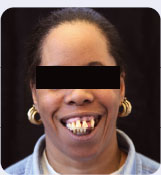
Figure 2: Pretreatment side view.
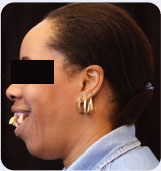
Figure 3: Pretreatment maximum intercuspation.

Figures 4 and 5: Pretreatment side views.
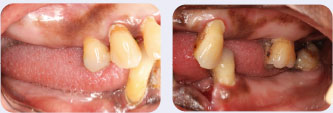
Figure 6: Maxillary and mandibular occlusal views.
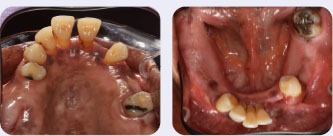
Figure 7: Panoramic radiograph.
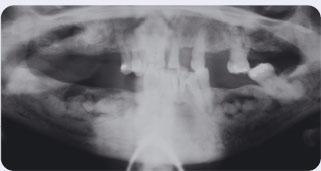
Figure 8: Periapical radiographs.

LEARNING GOALS AND OBJECTIVES
- Identify clinical features and symptoms of florid cemento-osseous dysplasia.
- Identify treatment options for patients with FCOD.
Medical History
- No significant contributory systemic findings
Dental History
- Multiple extractions in the past 5 years
- Patient has not worn any prostheses in the past
Clinical Findings/Problem List
- Missing teeth
- Supraerupted remaining dentition
- Grade II-III mobility
- Occlusal plane discrepancy
- Limited interarch space
Radiographic Findings
- Diffuse sclerotic lobulated masses with radiolucent borders in maxilla and mandible in irregular pattern
- Generalized 60-90% bone loss
- Periapical radiolucency on the remaining mandibular dentition
Diagnosis
- Severe adult chronic periodontitis
- Chronic periradicular periodontitis
- Partial edentulism
- Limited interarch space
- Florid cemento-osseous dysplasia
Clinical Decision-Making Determining Factors
- Florid cement-osseous dysplasia is a benign fibro- osse/>
Stay updated, free dental videos. Join our Telegram channel

VIDEdental - Online dental courses


